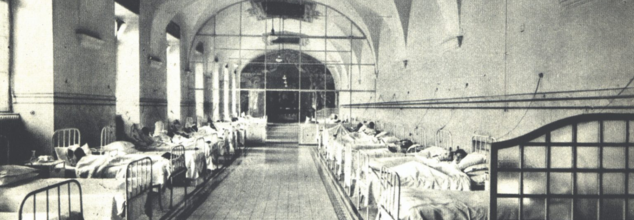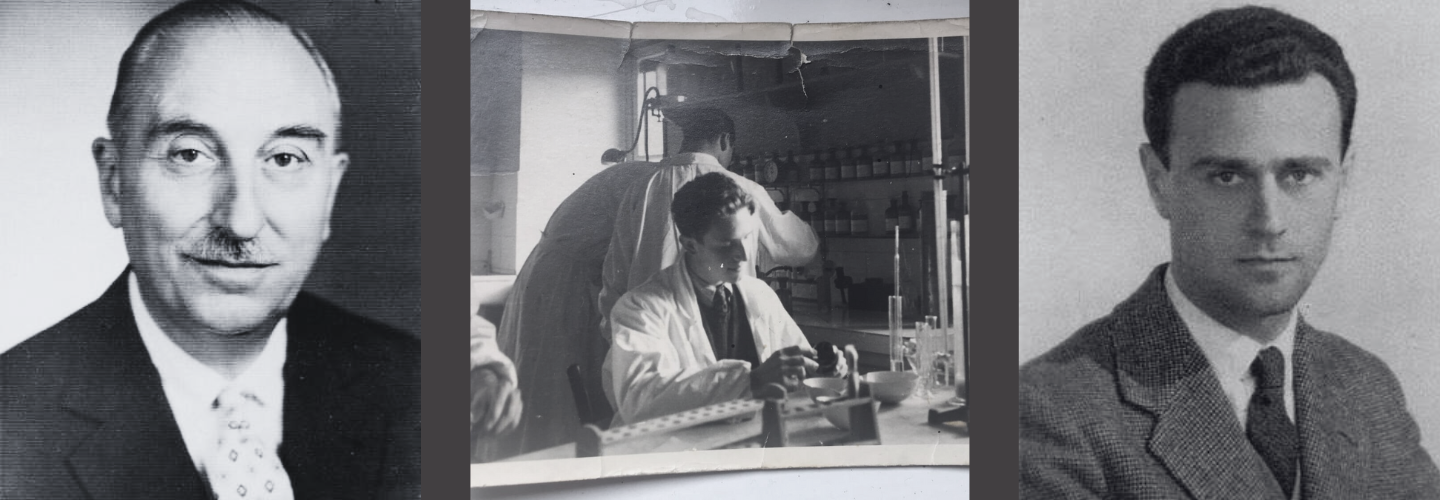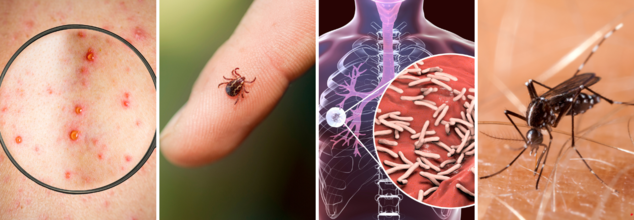- Health Conditions A-Z
- Health & Wellness
- Nutrition
- Fitness
- Health News
- Ayurveda
- Videos
- Medicine A-Z
- Parenting
- Web Stories
Alcohol-Related Cancer Deaths Double in U.S. Over 30 Years

Credits: Canva
A new study which is yet to be published in a peer-reviewed journal, which will be presented at the American Society of Clinical Oncology's annual meeting next week found that cancer deaths related to alcohol use in the United States have more than doubled in the last 30 years.
The number rose from under 12,000 in 1990 to over 23,000 in 2021. Men and people aged 55 and older are the most affected.
Alcohol And Cancer Risk
The research team analyzed national death data from 1990 to 2021 to understand alcohol's role in cancer mortality. As per Dr Chinmay Jani, who is the lead author of the study and a clinical fellow in haematology and oncology at the Sylvester Comprehensive Cancer Center, "We already know other risk factors, such as tobacco, for cancer. However, it is very important to know that alcohol is also a risk factor and can be a carcinogen in many different cancers,” as reported in ABC News.
Dr. Jani emphasized that even small amounts of alcohol can pose a risk. “It doesn’t necessarily mean that you are drinking every day,” he added, highlighting the importance of understanding the cumulative effects of alcohol over time.
Seven Types Of Cancers Were Examined
The researchers focused on seven types of cancer linked to alcohol use: breast, liver, colorectal, throat, voice box, mouth, and esophageal. While alcohol does not cause every case of these cancers, it is a known contributing factor in a significant portion of them.
In 1991, alcohol-related cancer deaths accounted for 2.5% of all cancer deaths in men and 1.46% in women. By 2021, these figures rose to 4.2% in men and 1.85% in women. The increase in men was particularly striking — a 56% rise in alcohol-related cancer deaths — while for women, the increase was nearly 8%, according to NBC News.
Cancer Affecting Adults And Men Disproportionately
Dr Jani also noted a gender gap in the findings. He said, “It was not surprising that it was higher in men, but it was certainly surprising how much higher it was in men versus women.”
As per the data, cancer deaths related to alcohol were more common in men and individuals aged 55 and over. In men, within this age group, the death rose by more than 1% every year from 2001 to 2021.
“The carcinogenic effect probably isn’t affecting you right away in your younger age,” Dr. Jani explained. “But as you continue to drink as you age, this carcinogen has an accumulative effect on the body.”
Most Deadly Cancer
Among the seven cancers linked to alcohol, liver, colorectal, and esophageal cancers were the deadliest overall in 2021. For men, liver cancer was the leading cause of alcohol-related cancer deaths. For women, breast cancer ranked highest.
The findings underscore the growing public health concern around alcohol consumption and the urgent need for greater awareness about its long-term health effects.
Why Should You Must Apply Sunscreen Inside A Plane?

Credit: Canva
I love everything about travelling—the journey, the suitcase, and the sense of thrill. But one thing that really leaves me struggling is the condition of my skin after a long flight. The low air pressure and dehydrating air in the plane suck out every ounce of moisture from my skin. However, I recently discovered that what is even more dangerous is its exposure to harmful ultraviolet (UV) rays from the sun. What a lot of people don't know is that these harmful UV rays affect your skin even more when you are up there, at a higher altitude.
Therefore, health experts have warned that you should always wear sunscreen while onboard a plane. Moreover, wearing a relevant Sun Protection Factor (SPF) is especially important if you get a window seat rather than an aisle seat. Elizabeth Japal, from The Derma Lab, emphasises that many people do not realise that UV exposure actually increases as we move up in altitude, and aeroplane windows do not block all the UVA rays, which are the primary cause of premature skin ageing. "You’re essentially sitting next to a magnified sun bed, especially in the window seat," she told a leading media house.
This, combined with the low humidity of the cabin, makes your skin vulnerable to dehydration, dullness, and damage. "It's not just about how you look stepping off the plane—regular exposure to this kind of environment can really take a toll on skin health over time." The experts have encouraged people to prep their skin before travelling, whether you are flying short or long-haul. And yes, you still need to wear SPF even if it's cloudy and grey.
Urging people to prep before they step foot in the airport, Elizabeth says that this applies to everyone, whether you are flying short or long-haul. And yes, you still need to wear SPF even if it's cloudy and grey.
So, What Should We Do?
Dr Japal and other dermatologists suggest that you must clean, hyderate and apply a proper sunscreen before catching that flight. Here are 4 steps that you must follow:
1. Cleanse Properly Before Flying
In her number one rule, Dr Japal urges people to cleanse before flying. “Starting with clean skin is essential. Your face will already be exposed to the drying effects of cabin air—leftover makeup, SPF, or pollution will only clog pores and contribute to inflammation,' she told a leading media website.
2. Hydrate Your Skin
Both before and during the flight, you should spritz some mist on your face for hydration. The recycled air on planes can sap your skin of moisture within minutes. Doing this throughout the flight helps prevent dehydration and delivers an instant glow.
3. Hydrating Serum
Serums are your skin's drink of water. Layering a serum underneath your moisturiser maximises hydration while boosting antioxidant protection.
What Was The Pseudo-Tuberculosis Like 'Syndrome K' Saved Thousand Lives During World War II?

Fatebenefratelli Hospital's "Syndrome K" ward, 1944. (SyndromeK.com)
Have you ever heard of a disease so cruel that I haunts the oppressors? Maybe not. But such a disease, or a fake on exists.
Fear of disease has long haunted humanity. The reasons are many, form devastation of the Black Plague to the slow unraveling of rabies' mysteries, contagious illness offers with it dread, suspicion and isolation.
However, during the World War II, a trio of Italian doctors used this universal fear to not harm, but actually to protect. It was in 1943, when the trip created a fictional ailment known as Syndrome K. This was a fake disease invented that saved Jews from Nazi persecution.
The Invention of Syndrome K

The disease was entirely fabricated by three Italian physicians: Dr Adriano Ossicini, Dr. Giovanni Borromeo, and Dr. Vittorio Emanuele Sacerdoti.
They all worked at the Fatebenefratelli Hospital, a Catholic facility located on Tiber Island in the heart of Rome, these men developed Syndrome K as a disguise for Jewish patients fleeing Nazi capture.
The ruse began after the fall of Mussolini in 1943, when German forces occupied Italy. Jews in Rome, especially those who lived in Jewish ghetto faced arrest and deportation and were aware that Nazis were terrified of infectious diseases, especially tuberculosis. The doctors thus devised Syndrome K, which they described as a deadly, highly contagious illness and classified Jewish patients as infected. The doctors placed them in quarantine wards that Nazi soldiers would be afraid to enter.
The name Syndrome K was deliberately ambiguous and misleading. The "K" was thought to hint at Koch's disease, which is another name for tuberculosis. Ossicini later admitted that the letter also referenced high-ranking Nazis: Albert Kesselring and Herbert Kappler, who were leading the persecution of Roman Jews.
Misleading Symptoms Specifically Designed To Scare
For the ruse to be effective, Syndrome K had to sound convincingly terrifying. The doctors described it as a neurological disorder with symptoms ranging from violent coughing and seizures to paralysis and eventual death. The fictional disease was said to be extremely contagious, untreatable, and fatal.
Patients were instructed to feign symptoms if Nazis entered the hospital—loud, phlegmy coughs, labored breathing, and an appearance of extreme frailty. The illusion was so effective that even when German officers came to search the hospital, they quickly turned away after hearing the hacking coughs and being warned of a “mysterious and incurable” illness.
A Life-saving Deception
The success of the Syndrome K ruse depended on complete secrecy and cooperation. Staff at the hospital were informed of the plan and briefed on how to maintain the illusion. Jewish patients in hiding knew to play their roles. When Nazis arrived, the hospital’s quarantine ward, full of the “infected,” deterred even the most determined soldiers.
While one Nazi search did tragically result in the discovery and deportation of five Jewish refugees, the overall plan was remarkably successful. Historians estimate that around 100 Jewish individuals were saved through the invention and implementation of Syndrome K.
To further the deception, the hospital issued fake death certificates for refugees who were later smuggled out of the country or relocated to safer areas. Each certificate listed Syndrome K as the cause of death, reinforcing the myth of the disease.
All three doctors survived the war, and their courageous deceit has since been recognized around the world. In 2016, Fatebenefratelli Hospital was honored as a “House of Life” by the Raoul Wallenberg Foundation, recognizing sites that sheltered Jews during the Holocaust. Dr. Giovanni Borromeo was also named Righteous Among the Nations by Yad Vashem, Israel’s Holocaust memorial authority.
Diseases Are Spreading Fast- But Why Isn’t The CDC Saying Anything?

In an age where outbreaks can cross borders in hours and pandemics reshape entire economies, timely and transparent communication is not just helpful—it’s critical. The U.S. Centers for Disease Control and Prevention (CDC), long considered the global gold standard for public health messaging, now finds itself disturbingly muted.
Since the early days of the Trump administration, vital communication channels that once buzzed with disease updates, outbreak alerts, and public health advisories have gone noticeably dark. The silence is not just an administrative hiccup—it’s a systemic failure that public health experts fear could have devastating consequences for Americans and beyond.
For decades, the CDC operated with a clear mandate—to deliver science-based information to clinicians, researchers, policymakers, and the public to contain the spread of disease and save lives. From newsletters on diabetes and arthritis to emergency health alerts about disease outbreaks, the agency was a well-oiled communications machine.
That changed abruptly in January of Trump’s first term. According to internal sources and an NPR investigation, most of the CDC’s newsletters ceased distribution. The Health Alert Network (HAN)—which had served as a critical pipeline between the CDC and healthcare providers—has not issued a single alert since March. Content once overseen by CDC communicators is now subject to approval by the Department of Health and Human Services (HHS), which has taken over ownership of the CDC’s social media platforms.
“We are functionally unable to operate communications,” a current CDC employee admitted. “We feel like our hands are tied behind our backs.”
This communications bottleneck couldn’t have come at a worse time. The world is seeing an uptick in both new and re-emerging infectious diseases—from resurgent measles outbreaks in Europe and the U.S. to mosquito-borne threats like dengue and chikungunya in tropical zones. In Africa, Ebola and mpox cases are climbing. In Asia and the Americas, diseases like Zika and Japanese Encephalitis continue to circulate.
Meanwhile, here in the U.S., hepatitis outbreaks, chronic illness complications, and listeria contamination events continue with little to no public guidance from the CDC. A lack of clear information impedes early detection and prevention—two of the most crucial elements of effective public health response.
As Kevin Griffis, former CDC communications director, warned: “Public health functions best when its experts are allowed to communicate the work that they do in real time, and that’s not happening. That could put people’s lives at risk.”
Major Diseases That Are Spreading Across The World
While the CDC’s public channels remain conspicuously quiet, dozens of diseases are gaining ground, many of them preventable or containable with the right knowledge:
Dengue and chikungunya, spread by infected mosquitoes, are on the rise in Central and South America.
Measles, once nearly eradicated in the U.S., is resurging due to declining vaccination rates.
Tuberculosis (TB), polio, and Hepatitis A, B, and C remain significant threats in urban and rural populations.
Norovirus and listeria, both foodborne, continue to cause nationwide outbreaks.
Respiratory illnesses such as RSV and influenza still threaten vulnerable populations, especially children and the elderly.
Without timely updates and education from authoritative sources like the CDC, people are less equipped to take action—whether that means vaccinating their children, recognizing early symptoms, or preventing transmission.
Why Is CDC Not Sharing Health Updates?
Interviews with current and former CDC employees reveal a culture of fear and stifled autonomy. Workers are no longer allowed to post health facts or emergency updates without prior approval from HHS. Many posts are either delayed or blocked entirely—often stripped of critical details. And layoffs have further weakened the agency’s digital team.
Between February and April, internal newsletters were halted, social media activity plummeted, and even the CDC’s hallmark Morbidity and Mortality Weekly Report missed crucial publication dates.
In one shocking example, the CDC’s main Facebook page, which used to post multiple times daily, went silent for over a month. Even basic health updates—like how to care for a newborn or when to screen for colorectal cancer—have vanished from public view.
For a country that leads the world in biomedical innovation, the quieting of the CDC is a profound step backward. When transparency disappears from health communication, disinformation thrives. Public trust erodes. People delay seeking care. And diseases spread more easily, unchecked.
Moreover, the CDC’s influence goes beyond U.S. borders. International health agencies, global researchers, and low-resource countries depend on CDC data to calibrate their own responses. With the CDC effectively muzzled, the ripple effect could exacerbate global health inequities.
There is growing pressure from public health advocates, former CDC leaders, and international organizations for the U.S. government to restore autonomy to the CDC’s communications arm. This means not only reinstating internal decision-making powers but also rehiring expert teams and reactivating critical communication platforms.
© 2024 Bennett, Coleman & Company Limited

